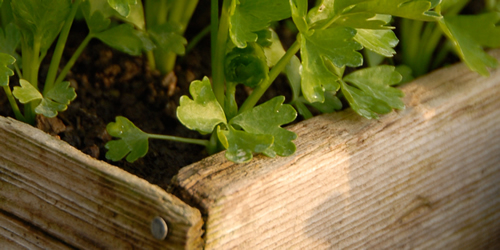How to Grow Seedlings Indoors
Start your seedlings indoors as early as March in some regions. Tomatoes, peppers, eggplant, and onions need to be started at least two months before you want to put them outside. Garden crops need much brighter light than most houseplants. A sunny window will work, if all the seedlings can get light—you may have to turn the flat often. If the window "almost works" but the light is not quite enough, consider hanging a light just over the plants. A compact florescent (larger size) in an inexpensive droplight could be just the boost they need. Many gardeners will need to use mostly artificial light. A florescent shop light or grow light fixture is not very expensive, uses little power, and works well as long as it is close to the plants—light loses strength quickly with distance. Hang your light on an adjustable chain or cord so that it can start 4–6" from the soil, and raise it as the plants grow (or start by putting the plants on blocks and lower them). Plants that are tall and thin, with lots of stem between leaves, need more light. If a plant gets bleached leaves, the light is too close. Growth should be continuous—if it slows, feed the seedlings with compost tea or other mild liquid fertilizer. Check to see that the roots have not filled the flat or pot. Once the seedlings are as tall as the pot is deep and have several pairs of leaves, they should be pricked out to a larger container or transplanted into the garden. If seedlings appear withered at soil level and fall over, they've been attacked by fungi and will not recover. This is called damping off. Here's how to prevent it:
For about a week before transplanting to the garden the seedlings need to be hardened off. Set them outside an hour or two at mid-day at first, gradually lengthening into the cooler morning and evening hours. Make sure they don't dry out and protect them from wind and critters. Or put them in a cold frame and open the lid longer each day. For an easy way to harden off seedlings and get a jump on the season, you can also use glass or plastic jugs with the bottom cut out placed over the plant. These are called cloches. You can also make little plastic tents over the plants. Much greater protection from frost and cold is attained by using water to store the day's heat and warm the plant at night. You can use plastic bottles of water to surround your seedlings, or put bigger containers of water inside your cold frame, hoop house, row cover, or other enclosure. It's quite amazing how much more growth plants can make with water around them to store the day's heat and radiate it at night. Related topics in this issue:
top | Newsletter Home |Table of Contents| Archive
|



